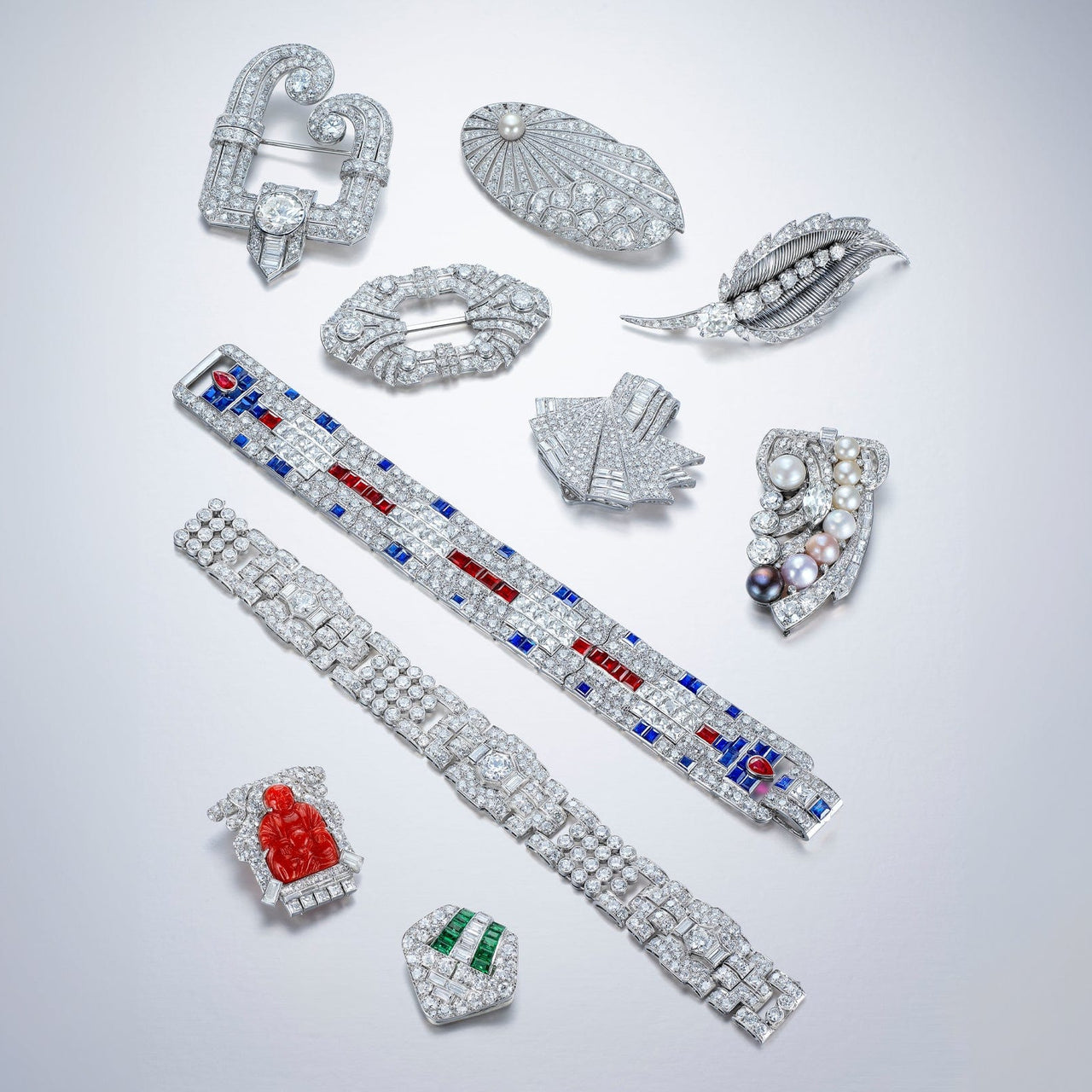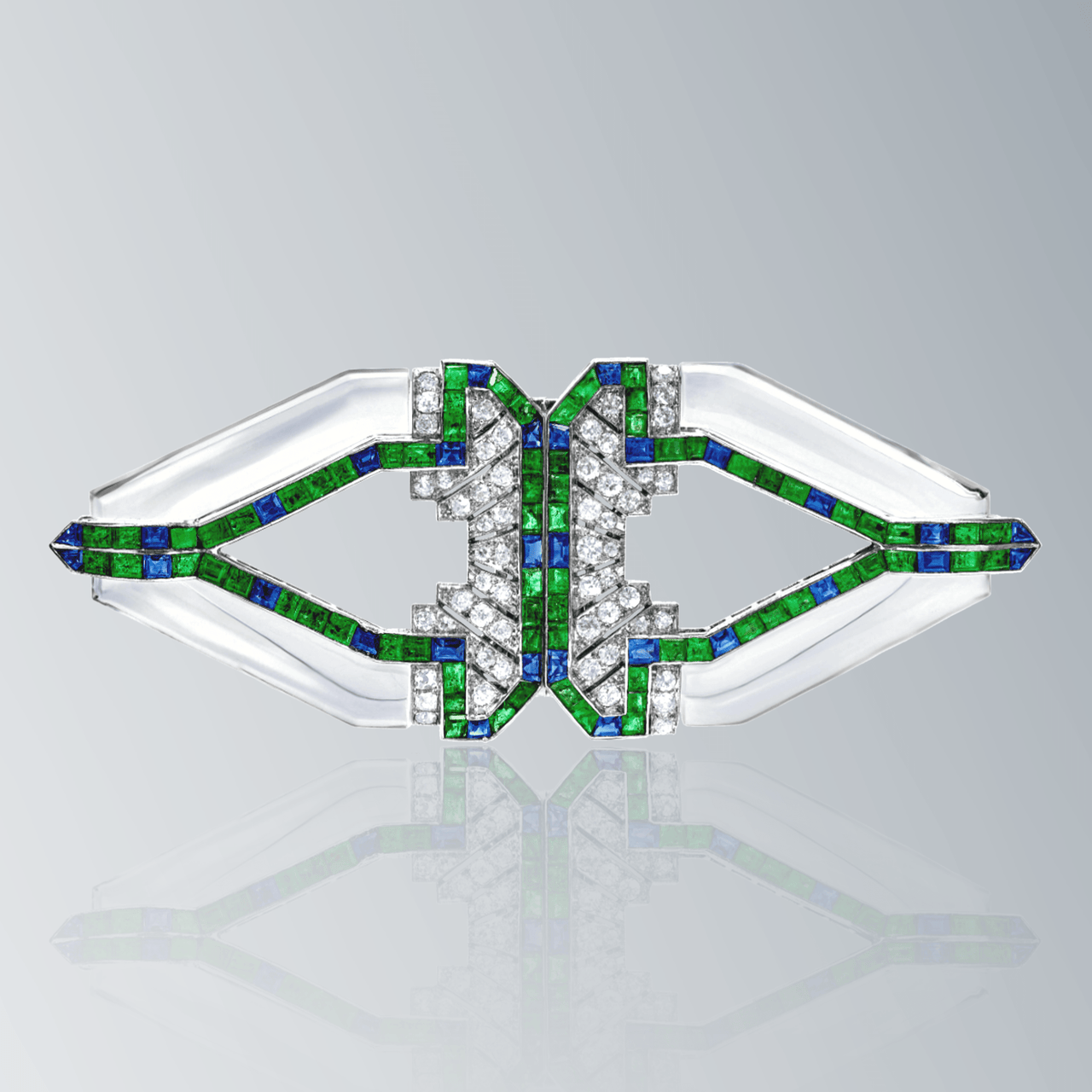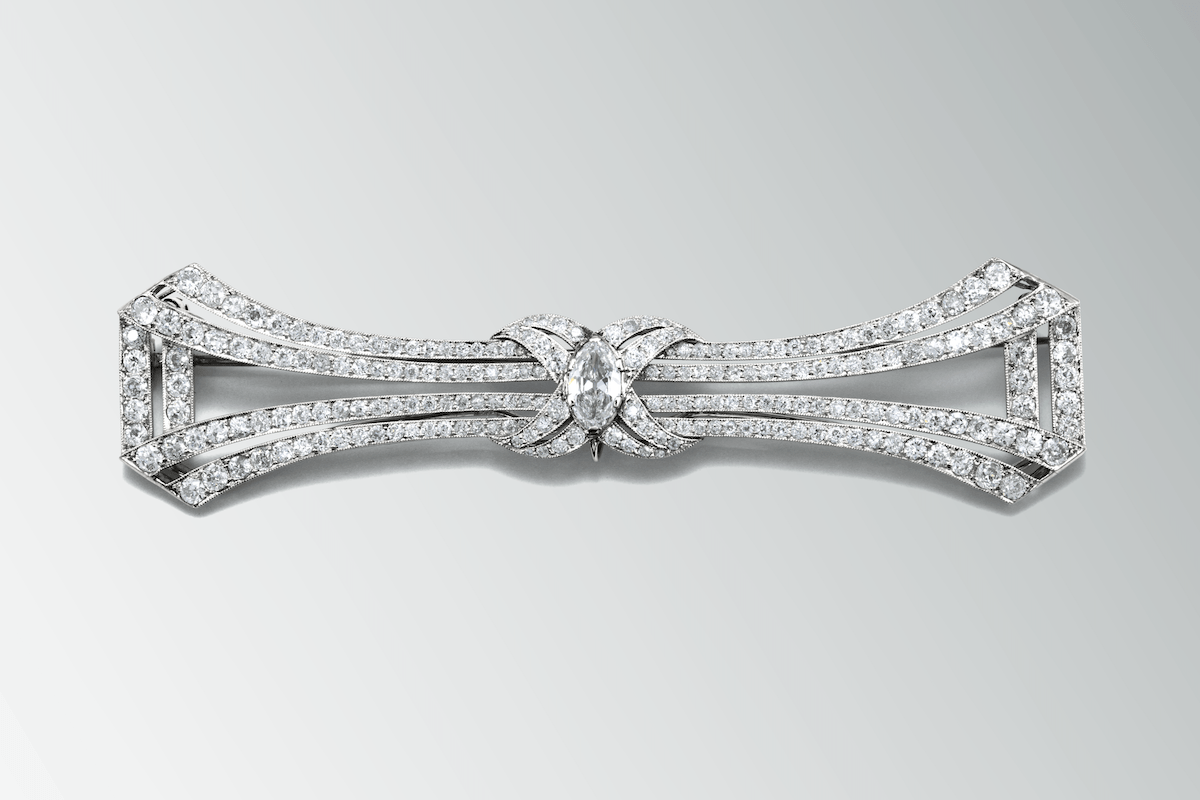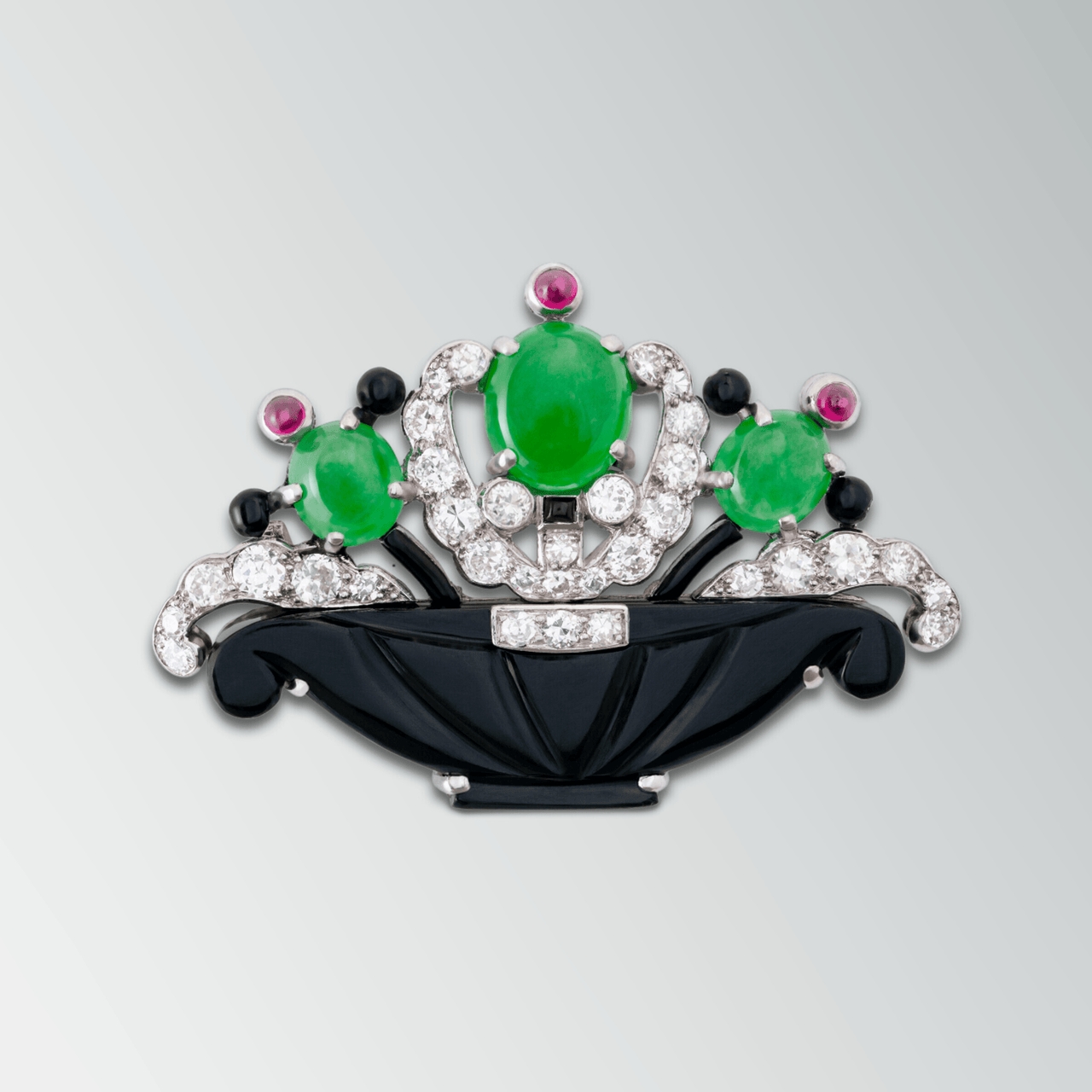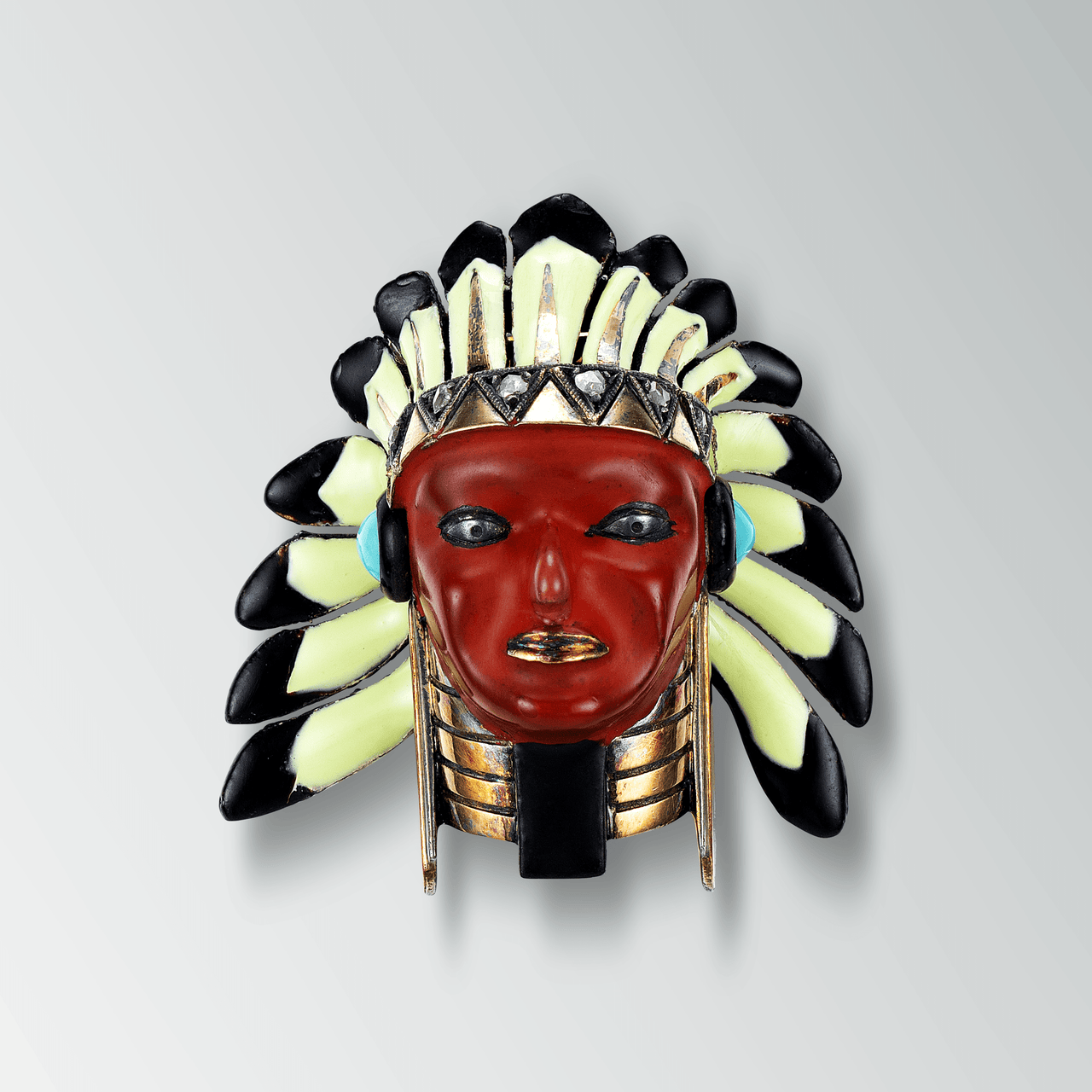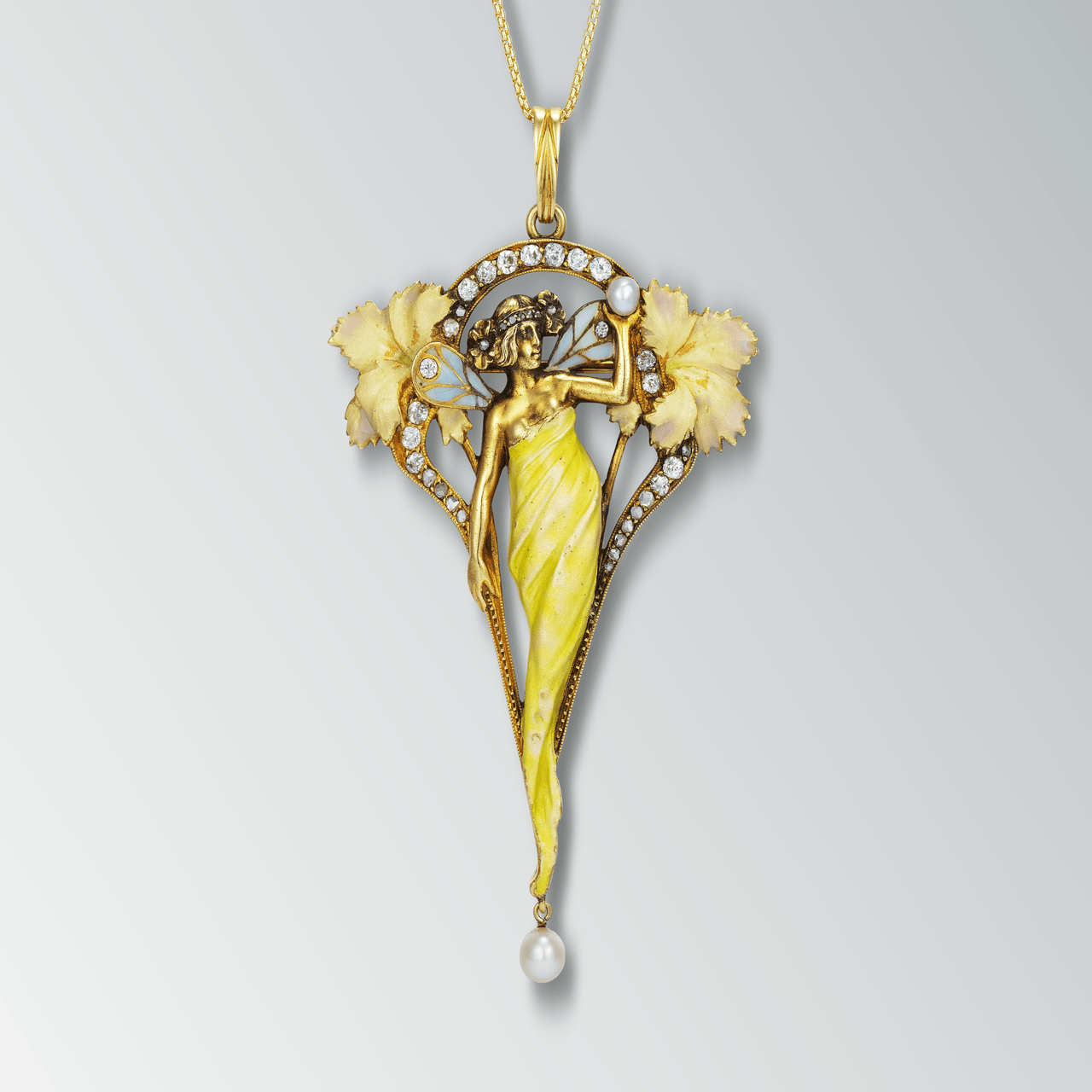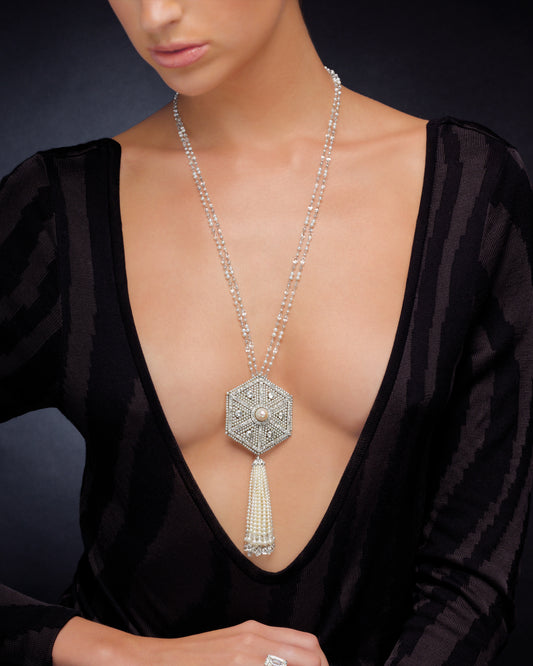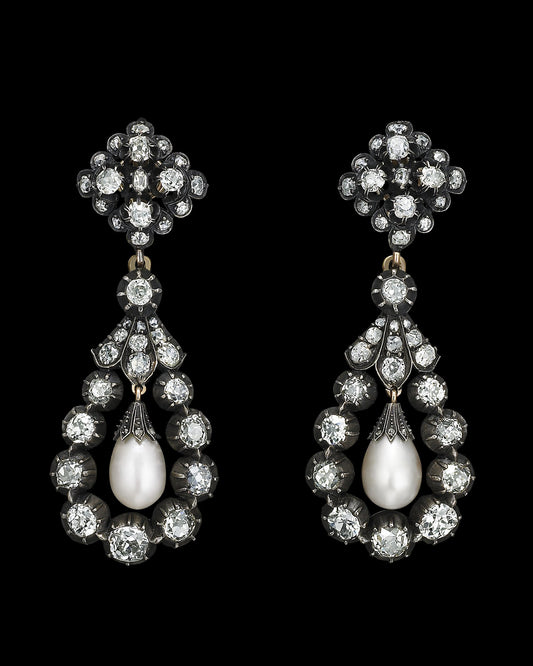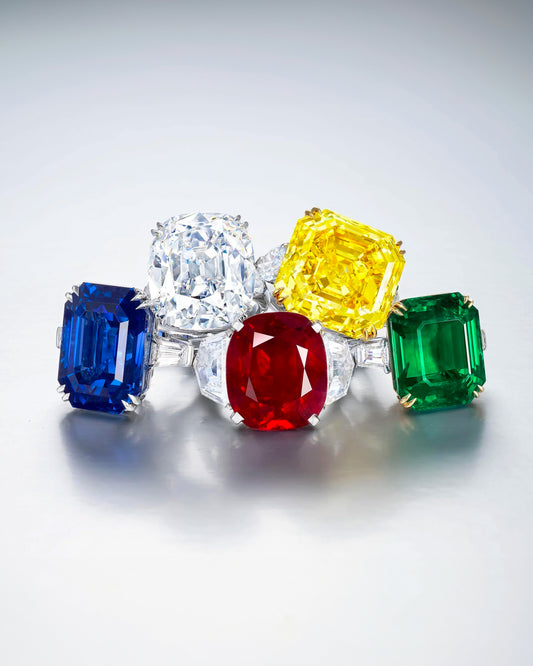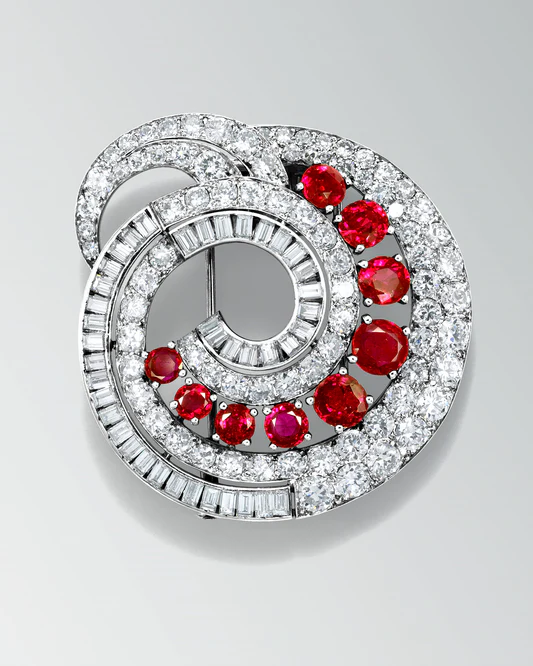
Imagination & Creative Expression Unleashed
At Ronald Abram, our Estate Collection predominantly features jewels from the Art Deco period, an influential, experimental era when imaginations were unleashed and creative expression was at its fore. But estate jewellery collectors are always looking for originality, and we pride ourselves on offering pieces that are desirable to every collector.
Our latest offering celebrates an eclectic selection of five pieces noted for their particular originality. Spanning a range of styles, eras and continents, these new additions to our Estate Collection are also distinct in their rarity and beauty.
An Art Deco Pair of Rock Crystal Double Clips by Raymond Yard, Circa 1937
Art Deco clip brooch
by Raymond Yard
An important addition to our Estate Collection with a fascinating provenance, this sapphire, emerald, diamond and rock crystal brooch is eminently collectible. Crafted in 1937, it is signed by Raymond Yard, one of North America’s foremost jewellers. Yard catered to the country’s wealthy elite, including the Rockefellers, JP Morgans and Vanderbilts of the era. Back in the day, they would all flock to his salon in New York, drawn by the jeweller’s esteemed designs and superlative coloured gemstones.
This particular brooch was commissioned by the Belmont family, one of the most important banking families of the time. Avid horse racing enthusiasts, they created the Belmont Stakes, the most famous horse race in the U.S. Authenticated by Raymond Yard, the original sketch of the brooch pictured here was discovered in the jeweller’s archives.
The ingenious construction of the brooch means that the two halves are detachable and can be worn as separate clips on the lapels of a jacket. Featuring Yard’s signature geometric lines, the carved rock crystal complements the old cut diamonds and contrasts with the calibré cut emeralds and sapphires, bringing a wonderful modernity to this stunning brooch.

The Original Raymond Yard Design Sketch
Art Deco Buckle Brooch
by Cartier
Created in the early 1920s, the years that marked the birth of the Art Deco era, this diamond buckle brooch is the most classical of the three Cartier pieces showcased here. Signed by Cartier Paris, it reflects a transitional period of design for the French Maison. Moving away from the flowing lines of the Art Nouveau period and towards the geometric purity of Art Deco, the symmetry of the double buckle is softened by the millegrain setting of the old cut diamonds, with tiny beaded details decorating the edges of the bow.
Thanks to the serial numbers engraved on the piece, Cartier’s archivist was able to ascertain that this brooch has in fact been sold twice by the House. Purchased by its original owner in Paris in the 1920s, Cartier London then reacquired the brooch for its Heritage Collection in the 1970s, before selling it once again in London. Generously sized and versatile, it’s clear why Cartier chose to obtain this beautiful piece for a second time, with the elongated design perfectly suited to wearing across the body or lengthwise on a lapel.
An Art Deco Flower Basket Brooch by Cartier, Circa 1929
Art Deco flower basket brooch
by Cartier
The Art Deco era is considered by many experts to be Cartier’s golden age. As the 1920s progressed, the Maison became bolder in its use of colour. Drawing inspiration from all over the globe, the arts of Asia, Africa and Mesoamerica also began to exert a powerful influence on its designs.
Signed by Cartier and presented with a certificate of authenticity, this flower basket brooch was crafted around 1929. A motif that the Maison returned to throughout the Art Deco years, the form of this flower basket is more abstract than similar Cartier designs from the same era, with the jadeite cabochons creating the illusion of flowers. Showing clear Oriental influences, jadeite has been a revered material in China for thousands of years.
An Art Deco Sioux Indian Chief Head Brooch by Cartier, Circa 1938
Art Deco Sioux Brooch
by Cartier
Crafted towards the end of the 1930s, just before the start of World War II, this Sioux Native American brooch reveals Cartier’s design preoccupations at the time. Laying the foundations for the stylistic identity of the Maison, the imagery of ancient cultures was being interpreted in Mughal-inspired Tutti Frutti jewels, Egyptian Revival designs and pieces that paid homage to the Native American people.
The American Indian influence is clear to see in this Sioux brooch. Modelled on a feather headdress-wearing chief from the Sioux Tribe, the colours of the lacquer remain vivid and strong, more than 80 years later. A covetable design in the 1930s, this was a repeatable piece for Cartier. That said, not many have survived in as fine a condition as this.
An Art Nouveau Plique-à-Jour pendant by Masriera y Carreras, Circa 1901
Art Nouveau Plique-à-Jour pendant
by Masriera y Carreras
Completing our latest selection of estate acquisitions is a jewel with a completely different aesthetic to the others featured here. At Ronald Abram, our estate pieces are sometimes acquired based on a combination of instinct and aesthetic appeal, an approach developed after many decades evaluating estate jewels. This is one such piece.
This superb pendant was crafted at the turn of the 20th century by Masriera y Carreras, one of Spain’s oldest family jewellers. Based in Barcelona, a city shaped by the Art Nouveau movement, this intricate jewel personifies everything that was great about the era. Featuring a winged nymph, framed by floral motifs, the pendant takes the form of a helicopter seed, with a natural pearl suspended beneath. The delicacy and artistry of the plique-à-jour enamel is exquisite and a perfect match for the sinuous folds in the nymph’s dress.
